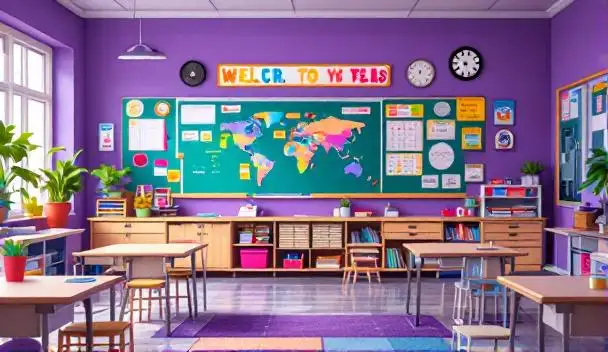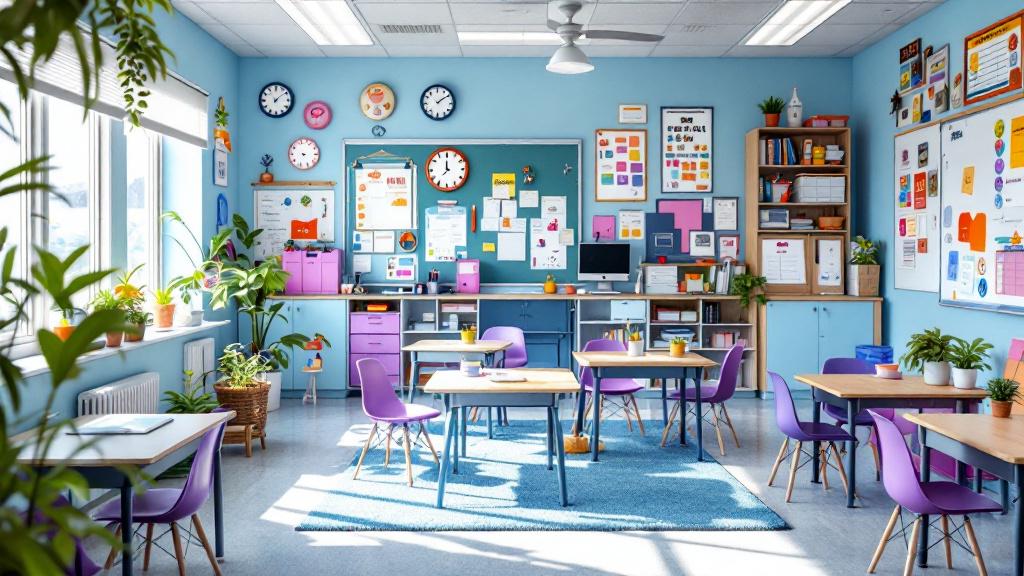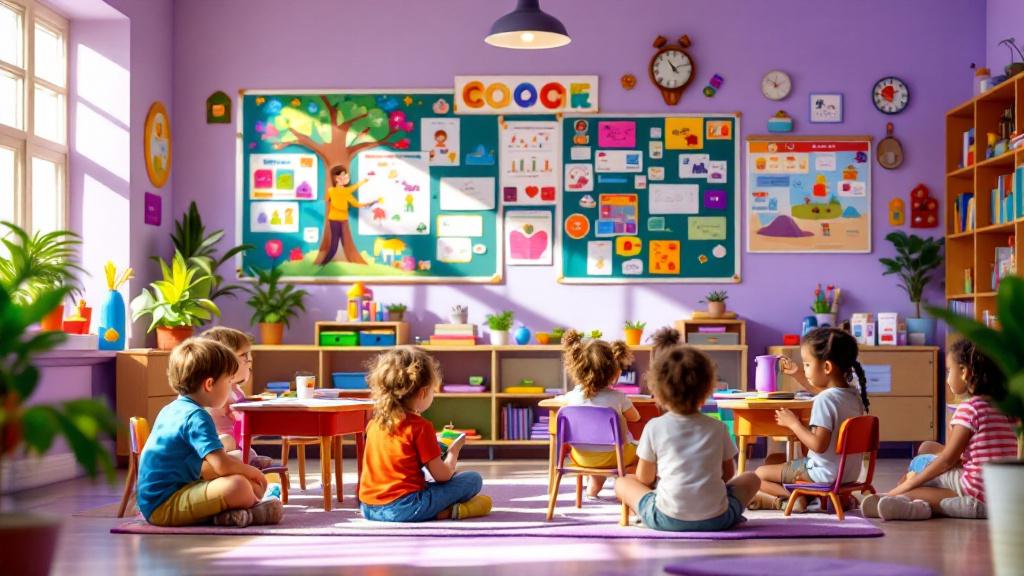Understanding School-Based ABA Therapy
Applied Behavior Analysis (ABA) therapy has emerged as a transformative approach in special education, particularly for children with autism and related developmental disorders. By incorporating behavioral principles within school settings, ABA therapy plays a pivotal role in supporting children with special needs, fostering both academic and social growth. This article delves into how school-based ABA therapy helps children thrive in educational environments through targeted interventions and collaborative efforts among educators, therapists, and families.
The Core of ABA Therapy in Special Education

What is ABA in special education?
Applied Behavior Analysis (ABA) is a therapy grounded in the science of learning and behavior, aimed at increasing helpful behaviors while decreasing harmful ones. It is particularly beneficial for individuals with autism, improving skills such as communication, social interactions, and academics, while also addressing problem behaviors. ABA is highly individualized, with programs tailored to each person's unique needs and delivered in settings like home, school, and community.
A key component of ABA is positive reinforcement, encouraging desirable behaviors and learning outcomes. In practice, therapists utilize the 'A-B-Cs' model (Antecedent, Behavior, Consequence) to effectively influence behavior. Research has shown that over 90% of children treated with ABA exhibit significant improvements in social, communication, and academic skills.
Techniques of ABA
Common teaching strategies in ABA therapy include:
- Discrete Trial Training (DTT): Focuses on breaking skills down into small, manageable parts.
- Natural Environment Training (NET): Teaches skills in the context of everyday activities, promoting real-world application.
- Visual Supports: Such as charts and prompts that aid comprehension and retention of information.
- Peer-Mediated Interventions: Involves teaching social skills through interactions with peers.
Application in special education
In special education, ABA professionals, including Board Certified Behavior Analysts (BCBAs) and Registered Behavior Technicians (RBTs), collaborate with educators to create individualized behavior intervention plans (BIPs). These plans address specific challenges like sensory sensitivities or social dynamics, reinforcing positive behaviors and supporting academic success. With an emphasis on creating a supportive environment, ABA therapy fosters inclusivity, helping children with special needs integrate better into General education classrooms.
In summary, the integration of ABA therapy into schools not only improves individual student outcomes but also enhances the overall educational climate, ensuring that diverse learners feel valued and supported.
Navigating School Transitions with ABA

How does ABA therapy support school-based transition services?
ABA therapy plays a crucial role in facilitating smooth school transitions, particularly for children with autism and other developmental disabilities. By providing individualized interventions tailored to each student’s needs, ABA therapists enable children to acquire essential skills required for success in new educational settings. This includes strategies for effective communication, social interactions, and behavior regulation.
Critical skills for transitions
Key skills that ABA therapy helps develop include:
- Communication Skills: Facilitating expressive and receptive language abilities, enabling students to articulate their needs and understand instructions.
- Social Interaction: Teaching social cues and interaction techniques, so students can engage positively with peers and teachers.
- Self-Regulation: Supporting children in managing their emotions and behaviors in a new setting, which is vital during times of change.
Collaboration with educators and families
Collaboration forms the backbone of effective transition plans. ABA professionals regularly work with educators and families to create and implement Individualized Education Plans (IEPs). This ensures that everyone involved aligns on goals and measurable outcomes. Additionally, through training provided to school staff, ABA therapy fosters an inclusive environment that encourages acceptance and understanding among all students.
In summary, ABA therapy not only enhances academic readiness but also prepares children socially and behaviorally for the transitions that lie ahead, helping them navigate the complexities of school life with greater confidence.
Incorporating ABA Strategies in Schools
How does ABA therapy work with schools?
ABA therapy works with schools by providing structured support to help children with autism develop essential skills for the classroom environment. It focuses on behavior modification through positive reinforcement, enabling children to communicate effectively, follow instructions, and reduce challenging behaviors.
Behavior modification
One of the main components of ABA therapy in schools is the application of behavior modification techniques. For example, ABA therapists use strategies such as:
- Positive Reinforcement: Encouraging desired behaviors by rewarding students for appropriate actions.
- Discrete Trial Training (DTT): Breaking down tasks into manageable parts for easier learning.
- Natural Environment Training (NET): Teaching skills in real-life contexts to improve generalization.
These strategies are essential for helping students navigate complex social dynamics and enhance their learning outcomes.
Individualized plans with ABA
A vital aspect of ABA is the development of Individualized Education Plans (IEPs) tailored to each child’s unique needs.
- Behavior Intervention Plans (BIPs): Created through thorough assessments, these plans outline targeted interventions for challenging behaviors.
- Collaboration with educators and parents: School-based Board Certified Behavior Analysts (BCBAs) work closely with teachers and families to ensure consistent support and reinforcement across environments.
This collaborative effort not only aids in academic success but also fosters a supportive atmosphere that embraces inclusion and acceptance among peers.
The Benefits of Early Intervention with ABA
Impact of ABA on Early Development
ABA therapy is crucial for young children with autism as it provides structured interventions that target developmental milestones. Research indicates that early intervention leads to significant improvements in communication, social skills, and academic capabilities. Over 90% of children treated with Applied Behavior Analysis (ABA) demonstrate marked progress, affirming its effectiveness in fostering critical skills crucial for success.
ABA's Role in Schools
Incorporating ABA therapy in school settings not only supports children with autism but also enhances the learning environment for all students. Board Certified Behavior Analysts (BCBAs) and Registered Behavior Technicians (RBTs) work alongside educators to create individualized behavior intervention plans (BIPs). These plans are vital in addressing specific behavioral challenges, scaling interventions, and ensuring that students can thrive academically and socially.
Developmental Needs
ABA therapy is tailored to meet the unique developmental needs of each child. Techniques like Discrete Trial Training and Natural Environment Teaching foster real-world skill application. By facilitating smoother transitions and providing targeted behavioral support, ABA helps children develop essential life skills, enhancing their overall adaptation to classroom dynamics.
Empowering Educators and Families Through ABA

Collaboration and training
ABA therapy fosters strong collaboration among educators, behavior analysts, and families. This teamwork is crucial for creating effective support systems tailored to children’s unique needs. ABA professionals, such as Board Certified Behavior Analysts (BCBAs), train school staff on behavior management techniques, ensuring everyone is equipped to implement individualized strategies.
Support for educators
The training provided by ABA therapists empowers educators to foster inclusive classrooms. They learn to employ evidence-based practices, manage classroom behaviors, and enhance social interactions among students. By infusing ABA techniques into daily routines, teachers can create environments where all children, including those with autism, thrive academically and socially.
Family involvement
Parents are integral in the ABA process. Through training sessions, they learn how to reinforce positive behaviors at home, ensuring consistency between school and home environments. This partnership cultivates a supportive atmosphere for the child, promoting confidence and a sense of belonging. The ongoing dialogue between families and educators enhances a child’s overall development, making their journey through education more effective and fulfilling.
Evidence-Based Success of ABA in Schools

What do research outcomes show about ABA therapy in schools?
Research consistently indicates that ABA therapy significantly improves outcomes for children with autism and other developmental disabilities in educational settings. Over 90% of children receiving applied behavior analysis demonstrate substantial advancements in social skills, communication abilities, and academic performance. This long-standing evidence supports the efficacy of ABA as an intervention tailored to foster essential life skills.
How effective is ABA therapy?
The effectiveness of ABA therapy lies in its personalized approach, involving strategies such as Discrete Trial Training (DTT), Natural Environment Teaching (NET), and Positive Reinforcement techniques. These methods enable children to learn new skills and exhibit better behaviors, directly contributing to their academic and social success. Improved communication skills alone help children engage more effectively with peers and educators, which enhances their overall learning experience.
What skills improve with ABA therapy?
ABA therapy targets various developmental areas, focusing on:
- Communication skills: Enhancements in verbal and non-verbal expression.
- Social skills: Improved interactions through structured peer engagement activities.
- Behavioral management: Decreased challenging behaviors that may disrupt learning.
- Self-care abilities: Growth in independent living skills necessary for daily routines.
Through a collaborative approach that includes ABA therapists, educators, and families, schools can create enriching environments where children with autism thrive, ensuring they feel valued and supported.
Creating Inclusive School Environments with ABA

How Does ABA Therapy Foster Inclusive Education Programs?
ABA therapy is instrumental in cultivating inclusive education environments that support children with autism and other developmental disabilities. Schools implement programs tailored to the unique needs of neurodiverse students, often integrating Board Certified Behavior Analysts (BCBAs) and Registered Behavior Technicians (RBTs) into the educational settings. These professionals work in collaboration with educators and family members to develop Individualized Education Plans (IEPs) that outline necessary accommodations and support strategies.
What Role Do Peer Interactions and Support Play?
Peer interactions are crucial for social development in children with autism. ABA therapy emphasizes building social skills through various strategies, including role-playing and structured peer interactions. This approach not only helps students improve their communication abilities but also fosters empathy and acceptance among classmates, creating a supportive atmosphere for all students. By promoting inclusive peer relationships, ABA therapy enhances the overall classroom dynamic, ensuring every child feels valued.
How Is ABA Incorporated Into Inclusive Practices?
The incorporation of ABA in schools involves embedding targeted interventions within the curriculum. For instance, techniques like Discrete Trial Training (DTT) and Natural Environment Training (NET) are used to teach social skills and reinforce desirable behaviors in natural settings. This integration allows students to practice skills in real-life situations, facilitating better generalization from lessons to daily interactions in school. Moreover, consistent reinforcement systems and visual supports help create structured learning environments that minimize distractions and encourage engagement, making inclusivity a priority.
Conclusion: The Promise of School-Based ABA Therapy
School-based ABA therapy has proven to be an indispensable tool in enhancing the educational experience of children with special needs, particularly those with autism. By integrating evidence-based strategies into the classroom and fostering collaboration among educators, therapists, and families, ABA therapy not only supports developmental milestones but also nurtures a nurturing and inclusive school culture. As educational institutions continue to embrace and expand these practices, students with special needs are afforded greater opportunities to thrive both academically and socially, paving the way for more holistic development and lifelong success.
References
- The Role of ABA Therapy in Supporting Child with Autism During ...
- The Connection Between ABA and Special Education: A Guide
- ABA Therapy vs School: Making the Right Choice For Your Child
- Applied Behavior Analysis (ABA) | Autism Speaks
- Learning with ABA in Schools | Behavior Support in Schools
- Impact of School-Based ABA Therapy on Student Development
- School-Based ABA Therapy - Surpass Behavioral Health
- Integrating ABA Therapy in Schools: Strategies for Success
- Using ABA Therapy in School Settings - Sunbelt Staffing





































































































